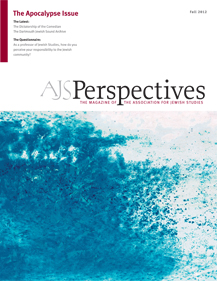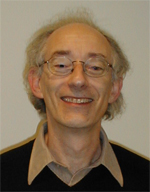
Our mission is to serve scholars and students of Jewish culture and others with a professional interest in these recordings, from performers and producers to community organizers.
The DJSA is very much an ongoing experiment from which we hope others can learn—and time is running out. Much of Jewish culture is trapped in collections of albums, tapes, and cassettes around the world sitting unused and even facing The Dartmouth Jewish Sound Archive Lewis Glinert and Alex Hartov the scrapheap because there is no longer the equipment to play them—nor the means to digitize them. Records are fragile, 78s in particular. Have you ever tried requesting an album by interlibrary loan?
We were fortunate with the mix of technical and cultural know-how we brought to the task: One of us is an electronics engineer versed in the history of recording, the other a Hebrew and Yiddish scholar with a passion for the liturgy and Jewish and Israeli music.
The physical and emotional heart of the project is the fascination of bringing back to life sounds that were captured long ago. Old recordings, whether on commercial 78 rpm records, or homemade tapes from the 1950s, or “transcriptions” discs cut in radio stations and sometimes in homes, or even wire recorders, present a technical challenge. The enjoyment of hearing these sounds come back to life cannot be described. Restoring recordings requires equipment, knowledge of recording technology, and time.
Users can browse by occasion (Shabbat, Pesach, wedding and so on), language, and genre. They can search by title, performer, composer, textual source, and much more. Should you wish to sample wedding melodies or compare renditions of the Musaf for Shabbat, you can rest assured that we are gradually entering every Kvodo Male Olam or Asher Bara by its place in the liturgy. If it’s children’s stories or Persian Jewish folksongs you’re after, we are striving to cross-classify by as many genres as our instincts tell us would work.
We are conscious of how problematic some categories are. “Folk” is a notorious one. How should one describe the songs of the Palmach and Israeli or Yiddish art songs (as popular? chansons? or poems?). How this affects the use of such a site is a research topic in itself.
So, where did we get all this stuff? We have never ventured forth to look for it. And we have never purchased a single item. It just pours in. People hear about it and donate their collections. Occasionally, a Bureau of Jewish Education or the host of an old radio station calls us in. Most significant by far are the collaborative digitization projects with Hebrew College (Boston) and the Jewish Music Institute (London University), with their trove of old Israeli and British recordings.
A confession: We love opening boxes of records and finding a jewel that few may ever have heard, such as Leonard Bernstein’s arrangement of “Reenah” on Corinne Chochem’s Collection of Jewish Holiday Dances and Songs (1947). DJSA has secured many unpublished recordings—twenty years of Al Jolson radio shows, studio tapes from Jan Bart, Martin Davidson, and the Zamir Chorale, sixty reels with the entire Frankfurt nusach, the Vistas of Israel broadcasts. And there are the sounds of a past generation that will likely never be reissued, like those holiday albums from the Jewish Education Committee of New York. An echo of the pulse of 1950s American Judaism.
The Indiana Jones spirit led us, courtesy of the Jabotinsky Institute, to possibly the earliest surviving Jewish underground broadcasts, made in 1939 on the Etzel station Kol Tzion HaLohemet, in eloquent response to the Yafo pogrom and the plight of the blockade-busting vessel Parita, concluded defiantly with a whistled snatch from Jabotinsky’s Shir Betar. And a quest for recordings of the first Hebrew radio station, hosted by the British-run Palestine Broadcasting Service, eventually uncovered original acetates deposited with the British Library by the legendary director Rex Keating—of which just one, eight minutes long, was in Hebrew: “Keep Fit and a Daily Tanakh Reading” from 1946. Approaches to all sorts of Israeli, British, and American archives had drawn a blank. The neglect of Israel’s audio history must cause concern.
Naturally, much of what we have is what American Jews were able to buy—or, from users overseas, the occasional French or South African or Latin American Jewish choir or cantor. Alas, a vast body of pre-World War II, European Jewish 78 rpm recordings is probably lost forever. Michael Aylward has documented many thousands of such recordings. Did the Nazis archive Jewish recordings and did they survive? There is, of course, the Phonoarchive of Jewish Folklore at the Vernadsky National Library in Kiev and other collections at Florida State University. But will they ever be available online?
Sleeves and labels (we scan them all) are a joy in themselves, as Bennett and Kun have demonstrated in And You Shall Know Us by the Trail of Our Vinyl (2008). Of course, the text may be longer on fantasy than fact. Why does every cantor or Chasidic rock artist have to be described as an international celebrity? But the LP sleeves—both image and text—were savored and memorized in almost every Diaspora and Israeli home. They were never studied or taught but they were at the core of a visual-textual culture.
The DJSA is a rich mine for contextualization. It’s possible to see what was in the collection of some revered Chasidic rabbi. It is possible to gauge what was being issued where and when, by whom, and why. Thus, the American Orthodox musical scene sheds important light on this emergent force in American Jewry. Our assistants have interviewed key figures in the Orthodox music revival of the 1960s and 1970s, and we would like to see many more field recordings online—interviews, performances, even linguistic fieldwork, confidentiality permitting. Sadly, amateur recordings are often torture to the ears—the fate of so many audience recordings of Carlebach we have been given. Today, of course, YouTube and the like provide for easy sharing of Jewish materials, but where will YouTube be tomorrow? At the DJSA we have an application for worrying.
And our users? They number in the thousands, from Morocco to Melbourne. Many are cantors or perform in Yiddish. Some are in the media. Bavarian Public Radio wanted help with a program on “Jewish singers which were in Germany not very well known, e.g. Mordechay Hershman and Maurice Schwartz.” Then there are teachers and academics.
The requests can be poignant. Someone wrote that his grandfather, a gifted young singer, had perished on an El Al flight shot down in 1955. The DJSA has his only recording. A cultural attaché at the U.S. Embassy in Kiev e-mailed for access to support his work with the Jewish community. One young American wrote:
I had the pleasure of having dinner this holiday season with Jazz Legend Ornette Coleman and he told me of one of the most amazing voices spiritual or otherwise he had ever heard. The name was Joseph Rosenblatt. He said he lost the recordings he had in a move many years ago and told me if I ever found them that he would love to get them again. If you can help me hear the Cantor and get Ornette a copy it would be much appreciated.
We happily obliged.


